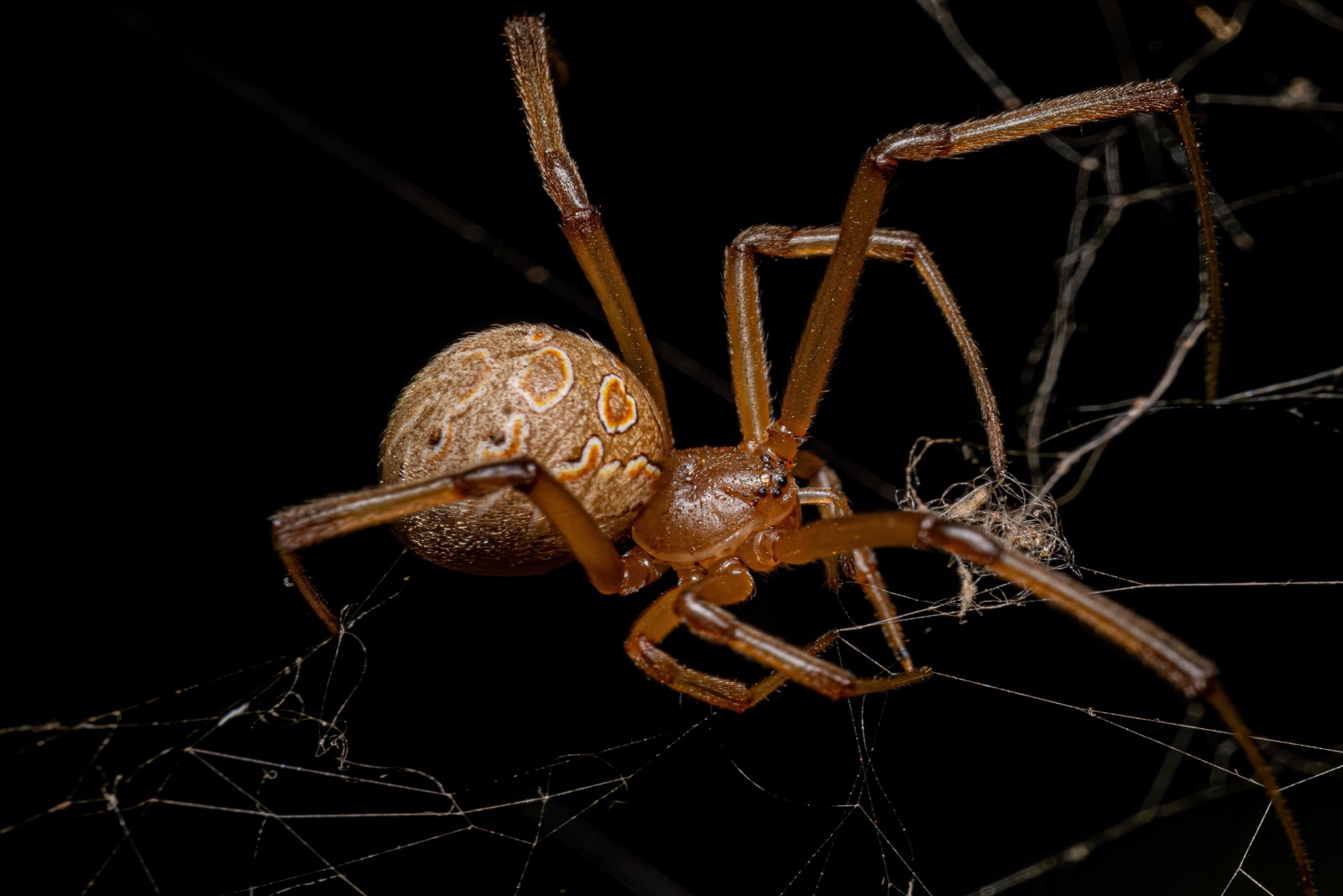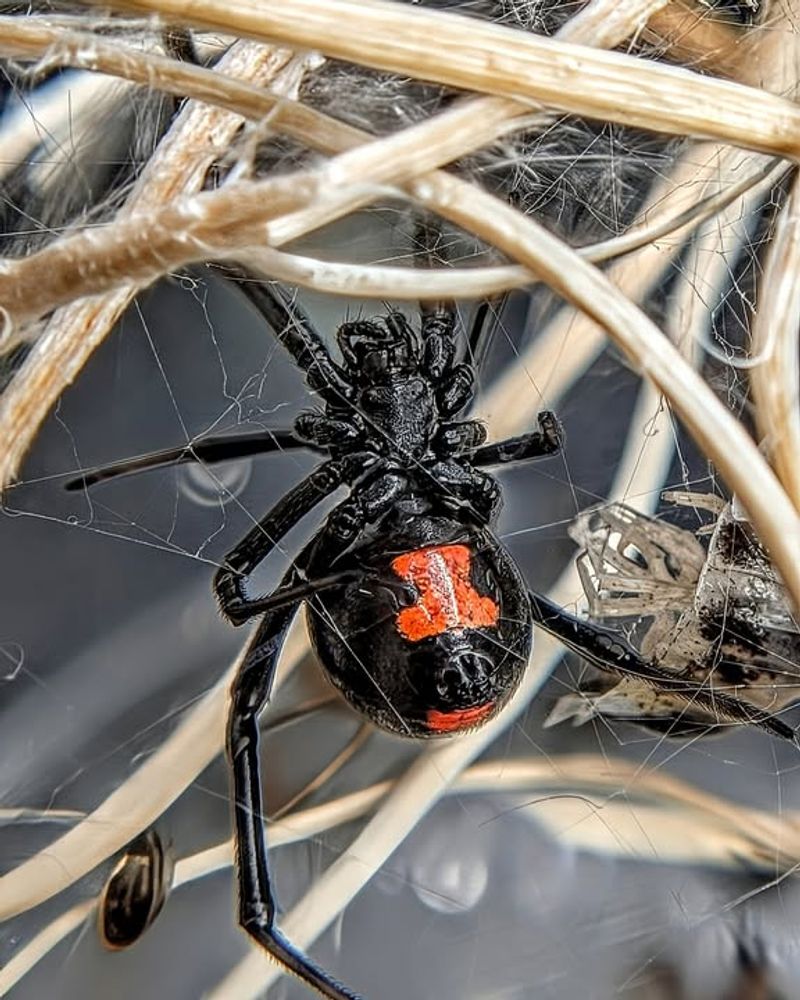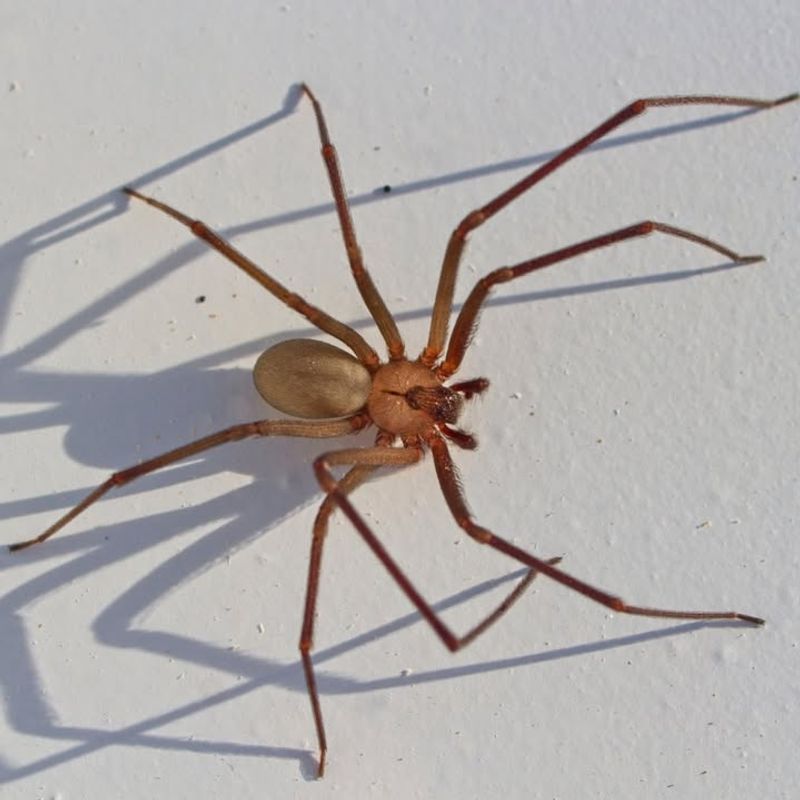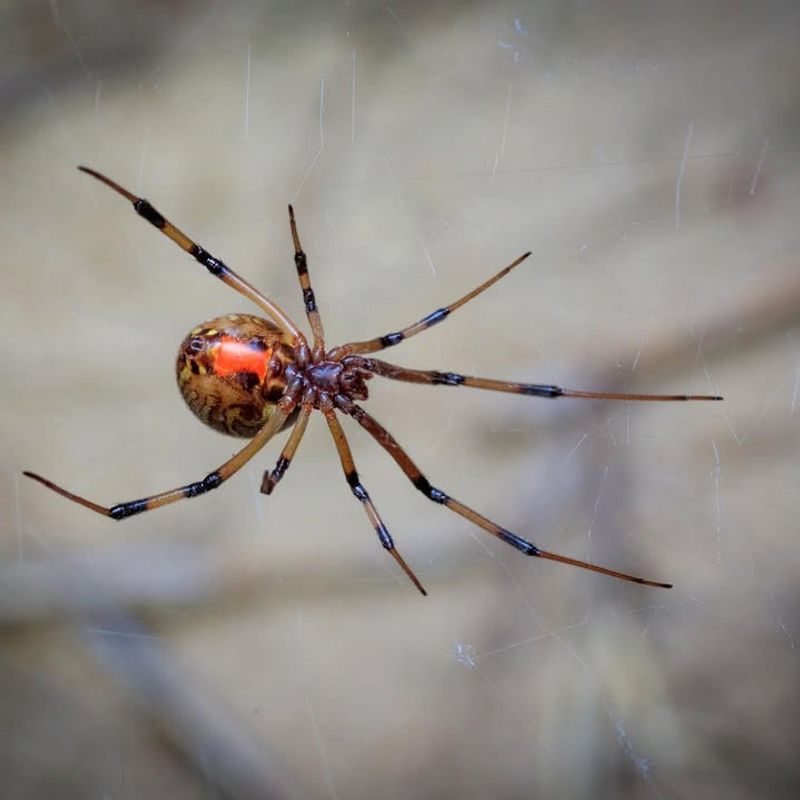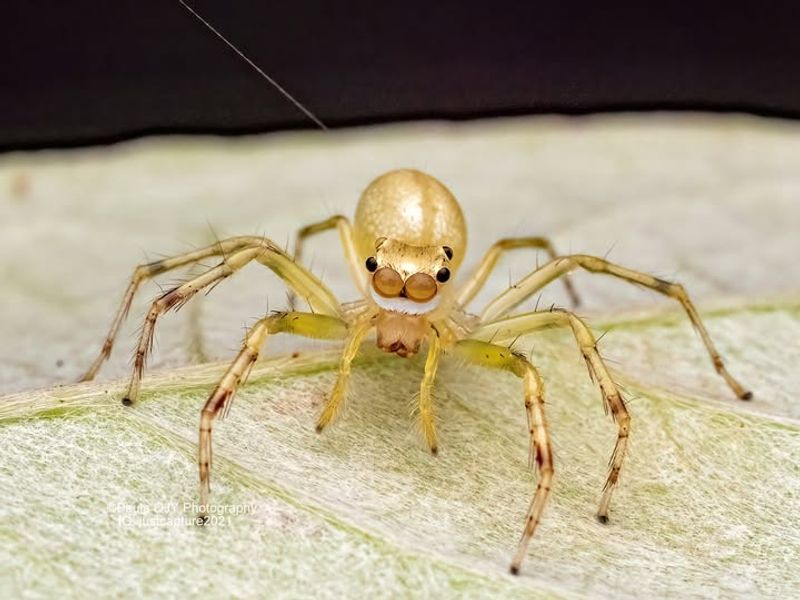Florida homes sit a stone’s throw from creatures that pack more punch than their size suggests, and a few spiders top that list. Some hide under patio furniture, some slip into sheds, and others wait in quiet corners for an unsuspecting step.
A mix of bold markings, quick strikes, and potent venom turns these arachnids into real threats for families across the state. A sharp eye and a bit of know-how keep surprises at bay and help every homeowner stay one step ahead.
1. Southern Black Widow
Recognizable by its shiny black body and iconic red hourglass shape underneath, this spider packs a venomous punch that demands respect. Females are the dangerous ones, measuring about half an inch long.
They love hiding in dark corners like garages, sheds, and woodpiles where they build messy, irregular webs. If bitten, you might experience severe muscle cramps, nausea, and breathing difficulty.
Always wear gloves when reaching into storage areas and shake out shoes before wearing them to avoid unwanted encounters with these notorious arachnids.
2. Brown Recluse
Sporting a violin-shaped mark on its back, this tan-colored spider earned its name by preferring solitude over confrontation. Most bites happen accidentally when someone disturbs their hiding spot in closets or attics.
What makes their bite scary is the potential for tissue damage that can take months to heal properly. The venom destroys skin cells, sometimes creating deep, painful wounds.
Check bedding and clothing that has been stored away, especially in undisturbed areas. Seal cracks around your home to prevent these reclusive spiders from moving indoors.
3. Brown Widow
A cousin to the black widow, this spider wears tan or brown colors with an orange or yellow hourglass marking underneath its abdomen. Their distinctive spiky egg sacs look like tiny medieval weapons.
Good news: their venom is less potent than their black cousins, though bites still cause pain and discomfort. They often build webs around outdoor furniture, mailboxes, and playground equipment.
Before grabbing patio chairs or reaching into your mailbox, take a quick look for webs and egg sacs to stay safe from these increasingly common Florida residents.
4. Red Widow
Found exclusively in Florida scrub habitats, this rare beauty sports reddish-orange legs and a black abdomen decorated with bright red or yellow spots. Unlike other widows, they rarely venture near homes.
Scientists know surprisingly little about their venom’s effects on humans since bites are extremely uncommon. They build their homes in palmetto fronds, staying far from human activity most of the time.
If you live near scrubland or enjoy hiking Florida trails, simply admire these colorful spiders from a distance and avoid disturbing palmetto plants unnecessarily.
5. Chilean Recluse
An unwelcome immigrant to Florida, this invasive species carries venom even more dangerous than its brown recluse relative. They arrived through international shipping and have established small populations in some areas.
Their bites can cause severe necrotic wounds that require immediate medical attention and sometimes surgery. They look nearly identical to brown recluses, making identification tricky for homeowners.
Inspect packages from overseas carefully and maintain clean, clutter-free storage spaces. Contact pest control professionals immediately if you suspect an infestation of these aggressive newcomers.
6. Yellow Sac Spider
Pale yellow or beige in color, this small hunter roams at night instead of building webs to catch prey. Many people get bitten while sleeping because these spiders often hide in bedding.
Their bite feels like a bee sting initially, then may develop into a painful sore with swelling and itching that lasts several days. Some people experience more severe reactions.
Keep beds away from walls, vacuum regularly under furniture, and seal any cracks where these nocturnal wanderers might enter. Shake out blankets and sheets before climbing into bed each night.
7. Mediterranean Recluse
Another foreign visitor establishing itself in Florida, this European native resembles other recluse spiders with similar violin markings and shy behavior. They prefer warm, dry indoor spaces like attics and storage rooms.
Their venom causes necrotic lesions similar to other recluse species, requiring prompt medical care to prevent complications. They reproduce quickly, making early detection crucial for homeowners.
Reduce clutter in storage areas where these spiders thrive and use sticky traps to monitor for their presence. Professional pest control becomes necessary if populations grow unchecked.

